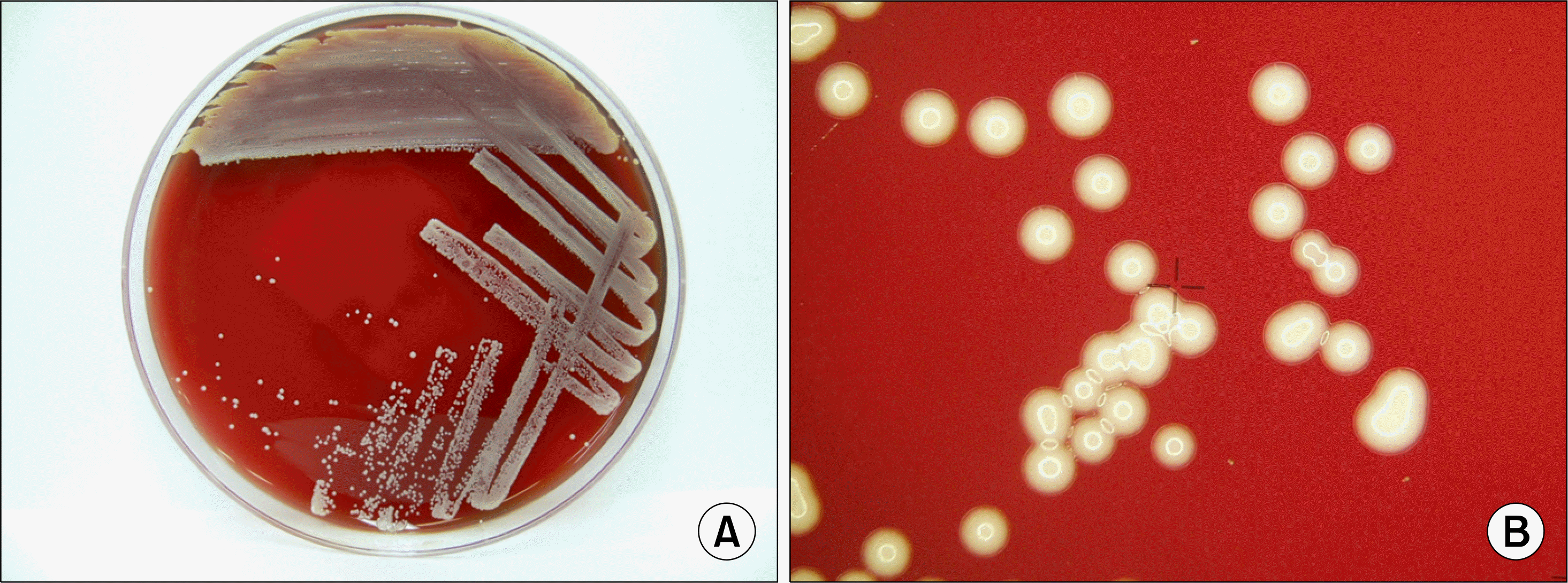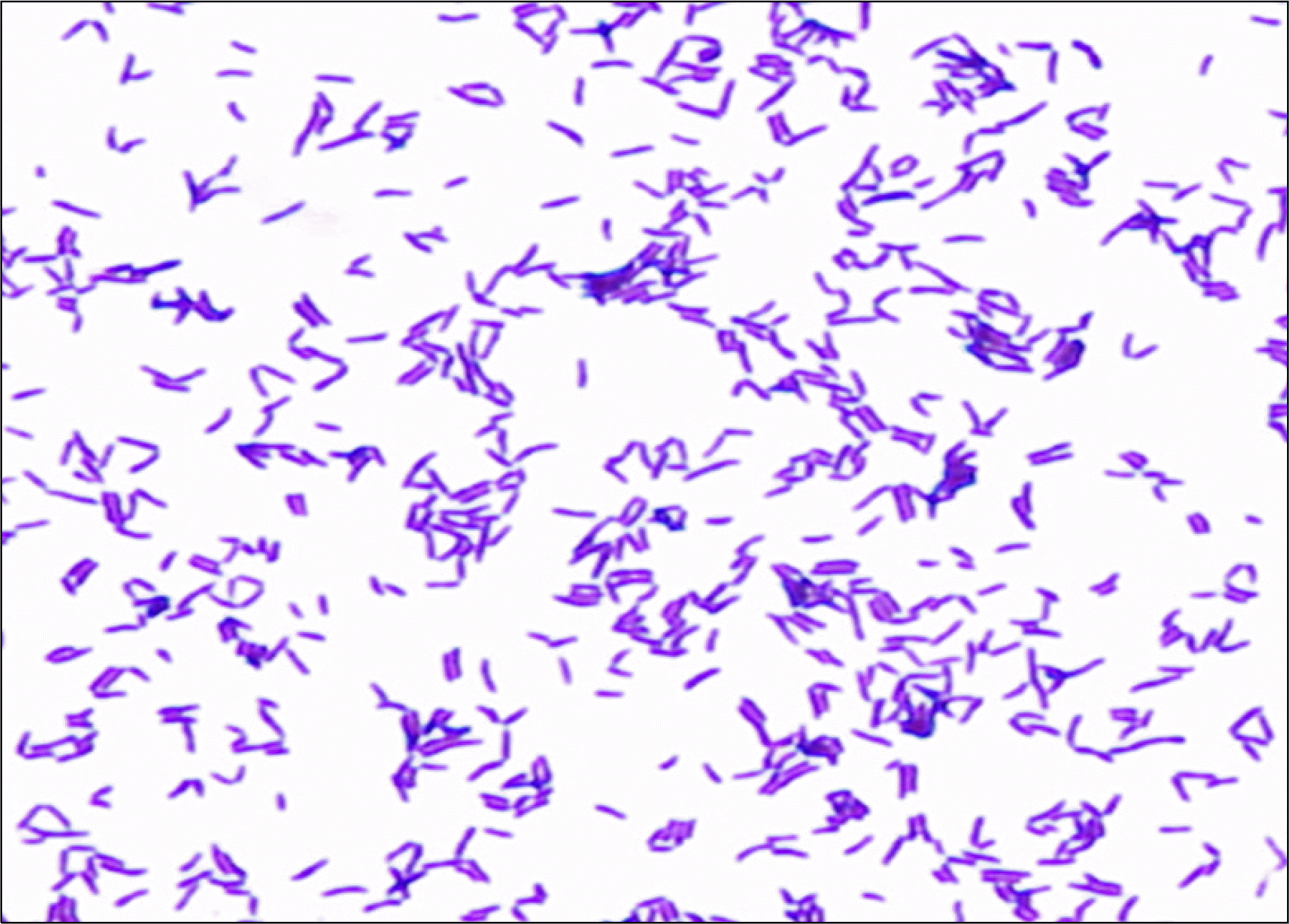초록
Brevibacterium spp. are Gram-positive, irregularly rod-shaped, strictly aerobic bacteria that resemble corynebacteria. Since they are a part of normal skin flora, they have been regarded as apathogenic, and human infections related to them are very rare. A 46-year-old man previously diagnosed with diffuse large B-cell lymphoma presented with fever without a definitive infectious source. Blood cultures from both peripheral blood and a central venous catheter showed that only aerobic bottles grew contaminants, while anaerobic bottles did not. Although the automated microbial identification system indicated Propionibacterium acnes, the isolated species was identified as B. casei by 16S rRNA sequence analysis. Our case emphasizes the utilization of 16S rRNA sequence analysis when the result from an automated system does not correspond with other laboratory findings. This is the first case of catheter-related blood stream infection due to B. casei identified by 16S rRNA sequence analysis.
Go to : 
REFERENCES
1.Gruner E., Pfyffer GE., von Graevenitz A. Characterization of Brevibacterium spp. from clinical specimens. J Clin Microbiol. 1993. 31:1408–12.
2.Wauters G., Haase G., Avesani V., Charlier J., Janssens M., Van Broeck J, et al. Identification of a novel Brevibacterium species isolated from humans and description of Brevibacterium sanguinis sp. nov. J Clin Microbiol. 2004. 42:2829–32.
3.Castagnola E., Conte M., Venzano P., Garaventa A., Viscoli C., Barretta MA, et al. Broviac catheter-related bacteraemias due to unusual pathogens in children with cancer: case reports with literature review. J Infect. 1997. 34:215–8.

4.Janda WM., Tipirneni P., Novak RM. Brevibacterium casei bacteremia and line sepsis in a patient with AIDS. J Infect. 2003. 46:61–4.
5.Lina B., Carlotti A., Lesaint V., Devaux Y., Freney J., Fleurette J. Persistent bacteremia due to Brevibacterium species in an immunocompromised patient. Clin Infect Dis. 1994. 18:487–8.
6.Brazzola P., Zbinden R., Rudin C., Schaad UB., Heininger U. Brevibacterium casei sepsis in an 18-year-old female with AIDS. J Clin Microbiol. 2000. 38:3513–4.
7.Reinert RR., Schnitzler N., Haase G., Lütticken R., Fabry U., Schaal KP, et al. Recurrent bacteremia due to Brevibacterium casei in an immunocompromised patient. Eur J Clin Microbiol Infect Dis. 1995. 14:1082–5.
8.Ulrich S., Zbinden R., Pagano M., Fischler M., Speich R. Central venous catheter infection with Brevibacterium sp. in an immuno-competent woman: case report and review of the literature. Infection. 2006. 34:103–6.
9.Clinical and Laboratory Standard Institute. Interpretive criteria for identification of bacteria and fungi by DNA target sequencing; approved guideline. Document MM18-A. Wayne, PA; Clinical and Laboratory Standard Institute. 2008.
10.McCaughey C., Damani NN. Central venous line infection caused by Brevibacterium epidermidis. J Infect. 1991. 23:211–2.
11.Gruner E., Steigerwalt AG., Hollis DG., Weyant RS., Weaver RE., Moss CW, et al. Human infections caused by Brevibacterium casei, formerly CDC groups B-1 and B-3. J Clin Microbiol. 1994. 32:1511–8.
12.Kaukoranta-Tolvanen SS., Sivonen A., Kostiala AA., Hormila P., Vaara M. Bacteremia caused by Brevibacterium species in an immunocompromised patient. Eur J Clin Microbiol Infect Dis. 1995. 14:801–4.
13.Funke G., von Graevenitz A., Clarridge JE 3rd., Bernard KA. Clinical microbiology of coryneform bacteria. Clin Microbiol Rev. 1997. 10:125–59.

14.Poesen K., Meeus G., Boudewijns M., Colaert J., Doubel P. Relapsing Brevibacterium casei peritonitis: value of 16S rRNA gene sequencing in accurate species identification. Perit Dial Int. 2012. 32:341–4.
Go to : 




 PDF
PDF ePub
ePub Citation
Citation Print
Print




 XML Download
XML Download